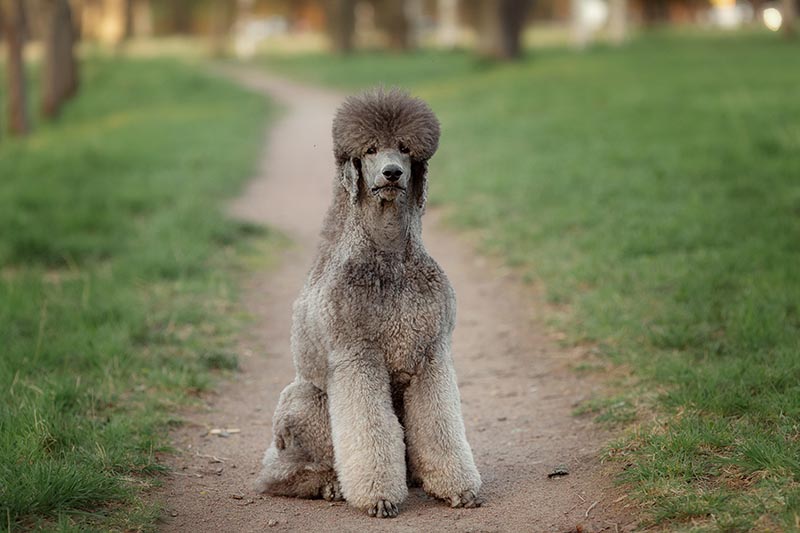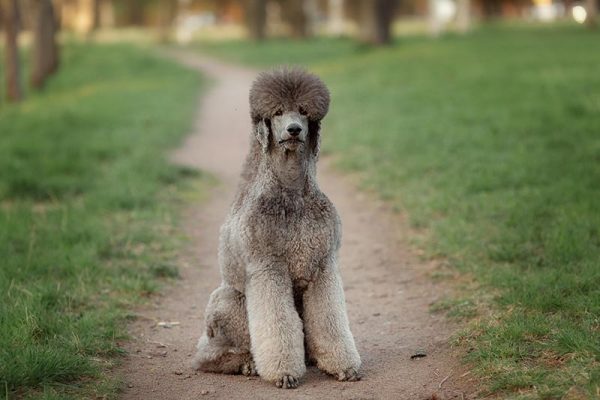Click to Skip Ahead
Poodles are renowned as fashionistas of the doggy world, with their curly coats and multiple awards from competitions. The silver-beige Poodle is no exception.
Breed Overview
Height:
15 – 24 inches
Weight:
40 – 70 pounds
Lifespan:
12 – 15 years
Colors:
Apricot, brown, white, gray, black, cream, fawn
Suitable for:
New dog owners, families with older kids, people with allergies
Temperament:
Intelligent, active, friendly, mischievous
The gorgeous color is different from other variations not just by its smokey look but how it manifests itself, leaving some Poodle owners scratching their heads but appreciative of its beauty, nonetheless. Silver-beige Poodles are born brown, and over time, the color fades until it’s a diluted brown.
Standard Poodle Characteristics
The Earliest Records of Silver Beige Poodles in History
Poodles are one of the earliest dog breeds documented, and they originated in Germany as early as the Middle Ages. Some people argue that Poodles are Russian or French in origin; however, in all these cases, they were the country’s water dogs, retrieving game from the water.
There are variants of the Poodle, such as the miniature, that do, in fact, hail from France in the 17th century, which may have given them the moniker “the French” Poodle.
The Poodle’s coat helps keep it insulated from the cold when retrieving game in the water, but some variants were assigned other duties. In France, the variant known as the miniature Poodle was first differentiated in 1907. These tiny pups were in circus performances as clowns and tightrope walkers.
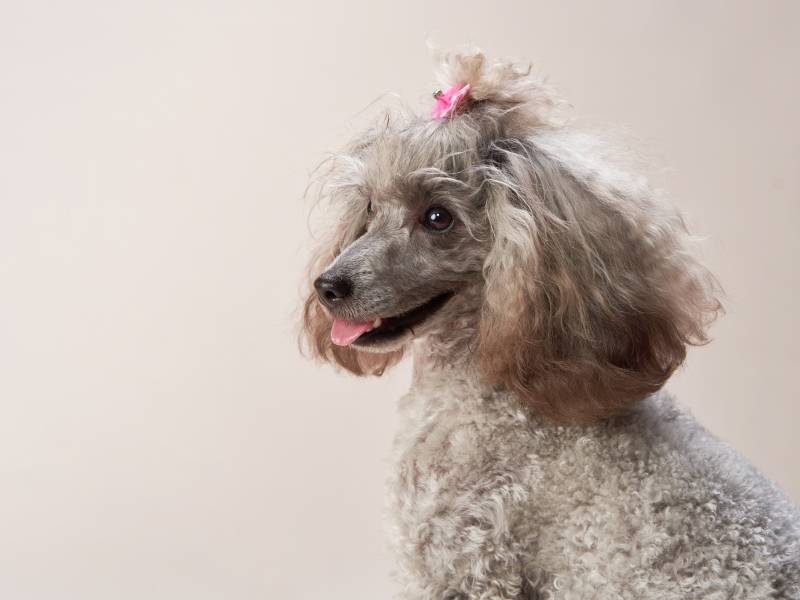
How Silver Beige Poodles Gained Popularity
When Poodles originated in Germany, they were water-retrieving working dogs. In France, however, their popularity boomed as companion animals after ring masters showed them in circus acts.
In the US, the Poodle’s popularity was slow to rise until the Westminster Dog Show in 1935, in which Poodle Champion Nunsoe Duc de la Terrace made waves as the winner of Best in Show.
After that, the Poodle rocketed in popularity, with initial claims to fame being overtaken by the breed’s intelligence, sweetness, and gorgeous coats. They eventually became one of the most popular breeds in the US; in fact, the Poodle was the most popular breed from 1960 to 1987. As of 2012, they are the third most registered breed with the FCI (Fédération Cynologique Internationale) in the world.
Poodles have gone from working and show dogs to companion animals, with the puppies of these dogs still adored after being mixed with other breeds (like Cocker Spaniels) to create gorgeous cross breeds.
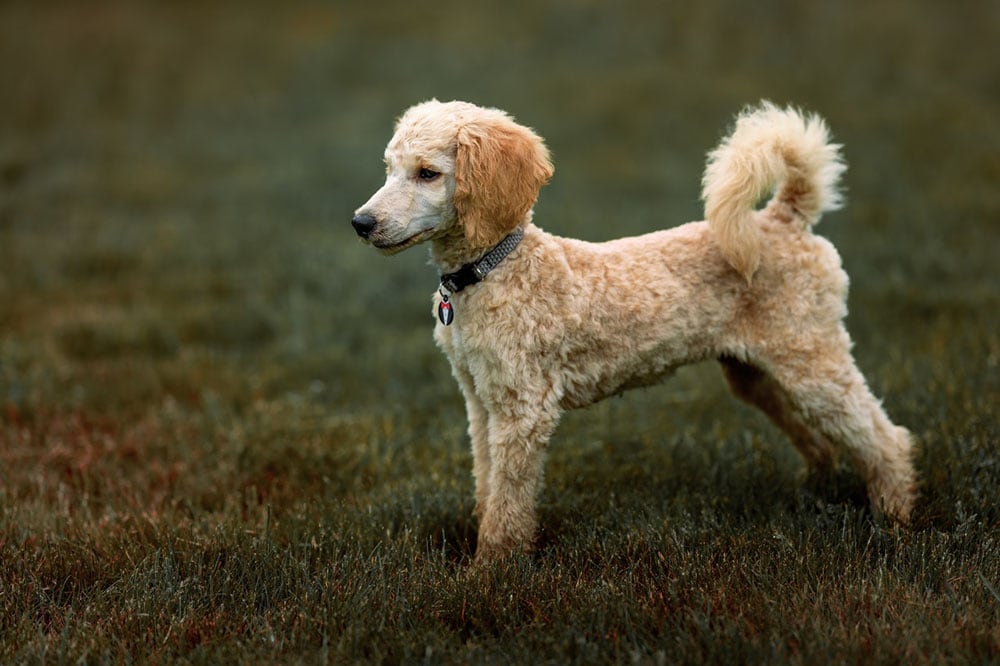
Formal Recognition of Silver Beige Poodles
The Poodle was officially recognized as the standard variety shortly after the American Kennel Club and the Kennel Club in the UK were founded in 1886 and 1874, respectively.
The standard, mini, and toy Poodle breeds are recognized by all kennel clubs, but the medium variety was not recognized by most of the world’s Kennel Clubs, apart from the FCI and continental European kennel clubs. The silver beige Poodle was recognized by the American Kennel Club as a two-tone coat color (along with cafe au lait) in the 1990s.
Top 7 Unique Facts About Silver Beige Poodle
1. The iconic coat cut that people associate with the Poodle breed has substance and style
It was used to keep a specific area of their body warm when they were retrieving in the water while streamlining movement in the water and preventing hypothermia.
2. The three sizes (four if you include medium) follow the same breed standard
This means that the smaller variants are carbon copies of the original, with health problems related to decreasing size usually bred out.
3. They are the second most intelligent dog in the world, behind the Border Collie.
The breed happily showcases their intelligence, willingness to learn, and eagerness to please.
4. There are so many hairstyles available for Poodle owners to try out
With some cuts giving your pet a complete change of appearance
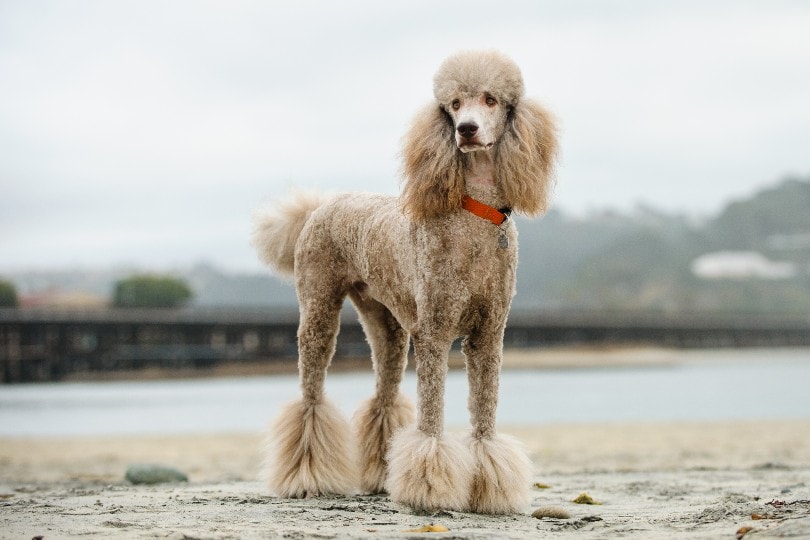
5. They are touted as hypoallergenic because of their curly coats.
However, no breed is entirely hypoallergenic, but Poodles do not shed like other breeds with double coats.
6. Their coats change over time and fade
After two years, a seemingly chocolate-brown puppy will start to fade, which can lead to the silver-beige coloring you see in older dogs.
7. They need lots of exercise
Leaving them alone with nothing to do can cause behavioral problems such as separation anxiety and destructive behavior.
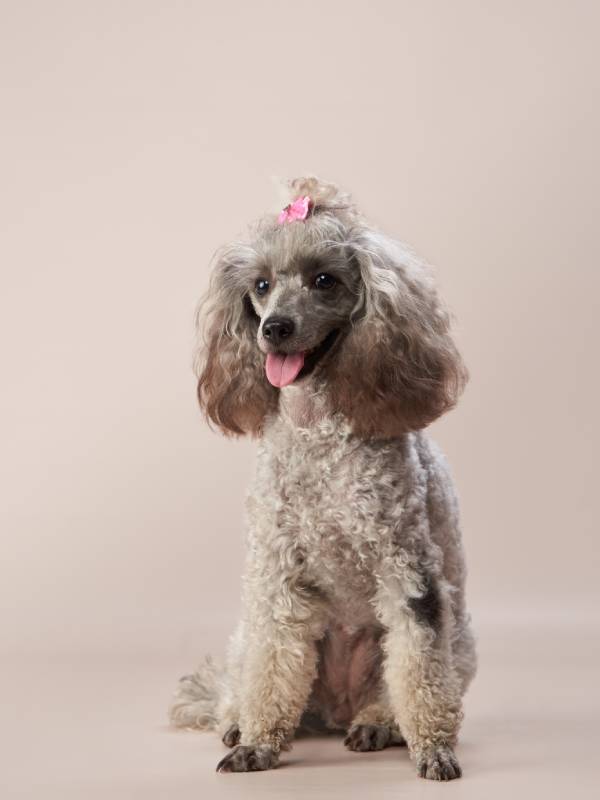
Does a Silver Beige Poodle Make a Good Pet?
Silver beige Poodles are gentle, kind, and very easy to train. They are great with families and children; however, they can be clingy, and separation anxiety is common. If they're well-socialized and trained from puppyhood, this shouldn't be a problem, and they should be well-adjusted and loyal to their families when they grow up.
The standard or medium variety of Poodle is most suitable for families with small children if supervised at all times since mini and toy varieties are too delicate and could be accidentally hurt.
Conclusion
There's something special about finding the perfect breed. Whether you prefer the diluted brown of the silver beige variety or other colors, the curly canine is remarkable, regardless of its coat color.
The Poodle is a sweet dog, and its temperament is often coveted and seen in mixed breeds such as the Cockadoodle or Cockapoo. Its gentle intelligence and sweet nature are the most significant reasons why the Poodle is so lovable, with its gorgeous coat not far behind.
Featured Image Credit: Valeriya Chistyakova, Shutterstock

